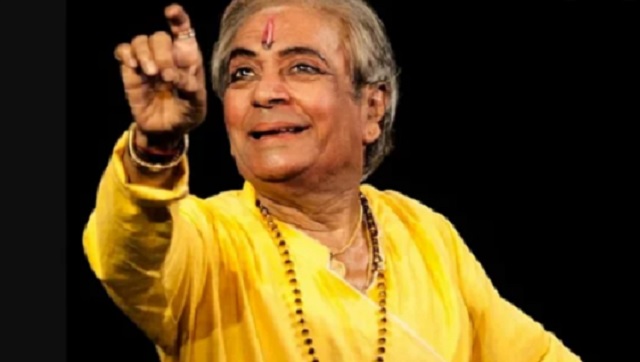“Vulnerability and authenticity are central to our writing philosophy,” says Felice Kuan, senior staff writer on the upcoming Life is Strange: True Colors, and adds, “We love creating moments where a character takes down their walls and shows something honest about themselves — especially when the character themselves didn’t expect that to happen!”
She goes on to explain that those moments are a big part of why players find the relationships in Life is Strange games to be so meaningful and lingering. She’s not wrong.
Over the course of two full seasons, one spin-off mini-season and one spin-off episode, Life is Strange has put gamers into the shoes of four beautifully crafted, well fleshed-out and multidimensional characters. They make you laugh and cry, they inspire and infuriate, and ultimately, it’s hard not to relate to them — at least in some small, but significant, way.
Announced earlier in the year, it was at Square Enix’s showcase at this weekend’s E3 that more details were revealed about Life is Strange: True Colors — the third chapter of the Life is Strange universe.
The Life is Strange games are probably best described as choose-your-adventure style interactive story that, as I’ve described in an earlier article , focusses “on minimal action and maximum choices”. Much like the genre-defining TellTale Games titles — the interactive story versions of Game of Thrones, Batman, The Walking Dead and the Fables comic book series, to name a few — of this variety, each Life is Strange season was also released as a five- or six-parter, with each episode (releasing a month or so apart) lasting between an hour and 90 minutes.
I
At first glance, there’s already a handful of things that True Colors does differently to the first two seasons of Life is Strange, and spinoffs Before the Storm and The Awesome Adventures of Captain Spirit. For instance, the latest outing — slated for a 10 September release — isn’t going to be episodic.
“Although we’re releasing the entire game at once, the story is still divided into five chapters, so it can be experienced episodically by fans who prefer it,” explains Felice, “So for that reason, it didn’t change our writing and design approach, other than the advantage of being able to evaluate the whole game experience and make sure it was delivering what we wanted it to.”
Denver-based actor Erika Mori, who voices True Colors protagonist Alex Chen, adds, “Since the game is structured in chapters with exciting endings for each, players have the option of playing it episodically like previous games or bingeing it all in one go.”
(Above: Captain Spirit. Below: Before The Storm.)
Speaking of Alex, she’s not the run-of-the-mill Life is Strange protagonist — a conflicted, teenaged bundle of emotions, nerves and insecurity. “At 21, [she> is a slightly older protagonist than we’ve seen in the series before,” says Felice, “She’s coming from many years in foster care to reunite with her brother, Gabe, in a small Colorado town, and more than anything else, she wants to find a home.”
While Season One protagonist Max Caulfield is on a quest to prevent almost-predestined tragedies from taking place and Season Two protagonist Sean Diaz (with brother Daniel in tow) is on a quest to escape bullies, the police and all manner of racists, Alex appears to be in search of reconciliation — thematically, a very different journey.
Next up, while the first couple of outings focussed on the ability to manipulate time (Season One) and space (Season Two), True Colors offers you, the player, the far less tangible power of empathy to get your way.
“Her supernatural power,” explains Felice, “enables her to feel, understand, and absorb the emotions of other people, often causing her to lose control. For her, at the beginning of the game, it’s a curse — but the events of the game will lead her to embrace that aspect of herself and gain new strength and hope.”
II
The first and second seasons of Life is Strange — as well as the standalone Captain Spirit episode — were developed by French studio Dontnod Entertainment, while US developer Deck Nine was responsible for the three-episode prequel to the first season titled Before the Storm and is currently at work on True Colors. So, how does one build on the series’ existing body of work?
“We were particularly interested in an empathy-based power, because for us, the whole genre of narrative adventure games is essentially an ‘empathy engine’,” notes Felice, “The player is literally experiencing the life of another person and seeing the world from their perspective. We’ve always found that quite powerful and wanted to make a game that embraced that idea completely.”
It could be argued that at some level or another, all games are designed to let the player vicariously experience the life of another person — whether that’s a Ballon d’Or-winning footballer, an up-and-coming grunt in the Yakuza, a faceless space marine laying waste to all manner of alien beasties or a rotund little fella running all over the place popping pills and avoiding ghosts. However, there’s a handful of games (not even all role-playing games nail this part) that truly put you into the shoes of their protagonists. Life is Strange is one such series of games. And with True Colors, the Deck Nine team appears to be set to turn things up a bit more.
Explaining how empathy works in the game, Felice says, “Our narrative director Jon Zimmerman brilliantly conceived of a gameplay loop that turns the whole level into a metaphorical space, meaning that we have our full creative arsenal available to convey that emotion.” Noting that each moment is handled in a unique manner, she adds,” [This> gave us a chance to come up with new aesthetics for each one, often leaning into the paranormal or surreal to highlight the magnitude of that character’s feelings in the moment.”
“The player is literally experiencing the life of another person and seeing the world from their perspective,” she continues, “We’ve always found that quite powerful and wanted to make a game that embraced that idea completely.”
According to Erika, it’s no longer just a tiny sprinkling of NPCs with whom the protagonist (in this case, Alex) will be able to interact. “The player will be able to interact with random townsfolk in Haven Springs (the fictional Colorado town in which True Colors is set) using this empathy power, as well as experience more elaborate and unique interactions with main characters. This power is totally under the player’s control and is an important tool to unlocking the secrets of the town.”
III
If the first season of Life is Strange tackled such themes as bullying, friendship and regret, it touched upon topics like abuse, domestic violence and murder. The second season ups the ante, with such motifs as racism, loneliness, drugs and so on.
Developer Dontnod came under a bit of fire for what some commentators perceived as ham-fisted or heavy-handed depictions of anti-Mexican sentiment and racial discrimination, with one or two going as far as to question a French studio’s place to critique American domestic policy (why does that sound so familiar?).
(Above: Life is Strange 1. Below: Life is Strange 2.)
“Dontnod has routinely reset the public’s understanding of who can be a protagonist in a cinematic narrative adventure game and what topics can be addressed,” offers Felice, “True Colors exists because of their pioneering work and it’s an enormous privilege to be creating more stories in the universe.”
It’s worth asking at this point whether True Colors will channel themes like the sort of anti-Asian violence and xenophobia found in (but not exclusively) the US in the wake of the discovery of COVID-19. Felice clarifies, “With the game taking place in 2019, Alex’s story doesn’t directly intersect with significant national or international events of the past year.”
“I think the game really focuses on the internal journey that Alex takes to know and ultimately trust herself,” chips in Erika, adding, “I see it less as a political or social justice-driven game and more about the challenges in our own inner life that we’ve all had to navigate at one time or another.”
IV
It would’ve been great to have Marshall McLuhan on hand to expand upon the medium and the message, but we’ll have to make do without.
That said, shorn of such attractions as heavy-duty action, massive worlds to be explored, intense puzzles or cutting-edge gameplay mechanics, perfect execution of the relatively simple medium of a choice-based game with a little bit of exploration becomes that much more important. To elaborate, the sense of agency, pacing and voice-acting need to be top notch.
Even the best story can fall apart, turn into a crashing bore or an exposition dump, if it’s not told right. And therein lies the beauty of this type of game: Putting players in the story by making them feel like what they are doing matters in the long run and surrounding them with enough fleshed-out, well-acted characters in a reasonably lively world.
The format is one that very few developers have nailed perfectly (another shoutout to the erstwhile TellTale Games), but with the exception of a few pacing issues in Life is Strange 2, this franchise seems to have it down pat. And the proof of the pudding is in fact that almost every decision you make is loaded with significance and truly lets you identify with the series’ protagonists.
(Above and below: Life is Strange 2)
“Life is Strange 2 is a prime example of the ‘empathy engine’ power of video games,” explains Felice, “So much of Sean’s story would evoke plenty of compassion and sympathy in a movie version, but there is still a distance there. But when I, the player, must face those decisions myself, I gain something arguably even more important, which is understanding.”
Key to providing an experience that leads to understanding is a diverse writing team of writers from a variety of backgrounds, she says. “Ryan Clements comes from games journalism and high fantasy, Deandra Warrick comes from triple-A, horror, and literary short stories, Mallory Littleton and Jon (Zimmerman) come from film, and my background is in theatre. So, we’re able to pull in a very broad swathe of influences, which I think is a huge benefit for the kinds of stories we tell.”
Speaking of which, it does feel as though a story of this nature would be best told in the sort of format that’s been espoused by the Life is Strange series thus far — minimal action, maximum choice — rather than a more linear action-adventure like, say, the Uncharted or The Last of Us games. Right? Felice doesn’t think so and emphatically states, “I would love someone to make that kind of game! The most beautiful stories have been coming out of all sorts of genres, I’m sure [a Life is Strange-esque story in an action-adventure game> is worth exploring.”
V
Driving the dialogues, choices, characters and story along in the Life is Strange games thus far has been the simple art style and gentle but stirring score. True Colors is set to be no different in that regard. “The art departments went on field trips to some of the small Colorado towns that Haven Springs is inspired by, and to several indie record stores to really capture a lived-in vibe that shows generations of interesting history,” says Felice about the research that’s gone into bringing Haven Springs to life.
(Above: True Colours)
The music, on the other hand, which has hitherto played a supporting role, gets its moment in the limelight with True Colors. “[It> actually has music at the centre of the narrative, with Alex being a guitarist since childhood. Music for her means many things, and I don’t want to say too much for spoilers, beyond my agreement that the score can absolutely transform a moment!”
As mentioned at the top, Life is Strange: True Colors releases on 10 September on PlayStation, Xbox and Windows. And I’ll hand it over to Erika for the final word. “It’s a game about the power of empathy and Alex’s critical journey of self-discovery. Players will be able to move through Haven Springs in a type of open-world style of game play, interacting with townsfolk to solve puzzles. The team at Deck Nine did an incredible job and it’s such a beautiful piece of art,” she says.
— All images courtesy Square Enix


)




)
)
)
)
)
)
)
)